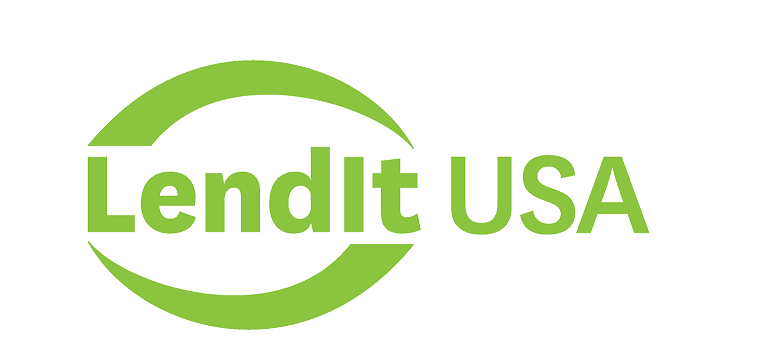ACCOUNTS
RECEIVABLE
FACTORING
Accounts Receivable funding as low as 1% per month
Kickfurther funds up to 100% of your inventory costs at flexible payment terms so you don’t pay until you sell. Fund your order(s) on Kickfurther each time you need more inventory so you can put your existing capital to work growing your business without adding debt or giving up equity.
Unlike traditional accounts receivable factoring, our inventory financing offers a cost-effective solution without the high fees and rigid terms often associated with invoice financing. Our solution provides a flexible alternative to AR factoring, ensuring your cash flow remains robust and adaptable.
- Often 30% lower cost than alternate lenders & factors
- Quickly fund $5,000,000+ in inventory
- Create a custom payment schedule (1-10 months)
- Fund inventory with no payments until revenue lands
What is AR Factoring?
Accounts receivable (AR) factoring is a financing method in which a business sells its outstanding customer invoices to a third party at a discount in exchange for immediate cash flow. It’s a quick way to convert receivables into working capital.
How Accounts Receivable Factoring Supports Cash Flow and Growth
When a business factors its receivables, it sells its invoices to a specialized factoring firm. The firm advances a percentage of the invoice amount upfront—often determined by prevailing AR factoring rates—and later collects the full payment directly from customers. In short, accounts receivable financing offers immediate cash, though its fees may affect margins.
Businesses that need to cover expenses or take advantage of opportunities quickly can benefit from accounts receivable factoring. Whether the business wants to reinvest or simply accelerate cash flow into their accounts, accounts receivable funding is a tool that can help them. Of course, there are plenty of other ways accounts receivable factoring can be used so you’ll want to keep reading to learn more.
How Does Accounts Receivable Factoring Work?
Building on our previous explanation of what accounts receivable factoring is, let’s break down how it works:
Example of Accounts Receivable Factoring in Action
Suppose a company has an accounts receivable (AR) balance of $10,000 and opts to factor this debt at an advance rate of 80%. This means the factoring company provides an upfront payment of $8,000 and then takes on the task of collecting the full $10,000 from the customer.
Once the customer pays the full amount, the factoring company subtracts its fee and remits the remaining balance to the business. For instance, if the fee is 3% of the total invoice (i.e., $300), the business receives an additional $1,700, bringing the total funds received to $9,700.
In summary, the business gets $8,000 immediately and $1,700 later, while the factoring company retains $300 as its fee.
Now that you understand how accounts receivable factoring works, let’s examine its key benefits and drawbacks.
Pros and Cons of Accounts Receivable Factoring
Factoring receivables is a common and important financial tool used by businesses of all sizes. Deciding whether or not to use this arrangement involves weighing its advantages against its potential drawbacks. Here’s a closer look at the key pros and cons:
Pros
- Immediate Access to Working Capital: Allows businesses to sell unpaid invoices to a third party at a discount, freeing up working capital immediately.
- Faster Cash Flow: Provides payment for invoices right away, eliminating the wait for customer payments.
Cons
- Higher Costs: Can be expensive since businesses pay the difference between the invoice’s face value and the received amount.
- Potential Impact on Customer Relationships: Handing over invoice collections to a third party may affect your customer relationships if not managed carefully.
- Risk of Unfavorable Terms: Finding a reputable factoring company may be challenging, and there is a risk of high interest rates if not careful.
AR Factoring vs. Inventory Funding
Accounts receivable factoring and inventory financing both help improve cash flow, but they work in different ways. AR factoring involves selling your unpaid invoices at a discount to get cash immediately. This option is simple to set up and works well when you need quick funds without waiting for customer payments. However, it is important to note that accounts receivable factoring can be expensive, and it can put a strain on relationships with customers. As such, it should only be used as a last resort.
Inventory financing, on the other hand, uses your inventory as collateral to secure funding. This method is especially valuable when you have a lot of cash tied up in stock or when you need to purchase more inventory to meet growing or seasonal demand.
For many businesses—especially when using solutions like Kickfurther—instead of resorting to AR factoring, inventory financing provides a more sustainable way to support growth and maintain healthy customer relationships while ensuring you have the inventory needed to keep up with demand.
Explore AR Factoring Options and Grow Your Business
Get Funded with Kickfurther
Kickfurther’s unique model lets you use your inventory as collateral and funds up to 100% of your inventory costs—without adding debt or sacrificing equity. With flexible payment terms that you control, you can keep your cash flow strong while scaling your business.
Flexible Inventory Financing with Kickfurther
No Immediate Repayments
Start repaying only when your new inventory order begins selling, so you’re not pressured by upfront cash flow demands.
Non-Dilutive Financing
Get the funds you need without giving up any equity, ensuring you maintain full ownership of your company.
Not a Debt
Since Kickfurther’s funding isn’t structured as a loan, it won’t burden your balance sheet with debt or impact your business valuation.
Quick Access
When supplier payments are due, you can fund your entire order quickly, ensuring you never miss a growth opportunity.
By funding your largest expense—inventory—Kickfurther frees up your existing capital for product development, marketing, or hiring, giving you complete control over your growth.
Explore flexible financing options to help grow your business. Check your funding potential with our simple online application
Where you've seen us


- Create Your online account Create a business account, upload your business information, and launch your deal
- Get funded within minutes to hours Once approved, our community funds most deals within a day, often within minutes to hours, so you’ll never miss another growth opportunity.
- Control your payment schedule We pay your manufacturer to produce inventory. Make the introduction and you’re off and running! Outline your expected sales periods for customized payment terms. At the end of each sales period, submit sales reports and pay consignment profit to backers for each item sold.
- Complete and repeate Complete your payment schedule and you’re done! Often once the community knows you, you’re likely to get lower rates on your next raise.
See Who Else We’ve Helped
Frequently asked questions
Not seeing your questions here? Please feel free to reach out!
Is there a difference between accounts receivable factoring and accounts receivable financing?
Accounts receivable financing and accounts receivable factoring are both methods of short-term funding that allow businesses to access cash that is tied up in outstanding invoices. However, there are some key differences between the two.
Accounts receivable financing is a type of loan that is typically provided by a bank or other financial institution. The business borrows a set amount of money and repays it, plus interest, over a fixed period of time. In contrast, accounts receivable factoring is a type of transaction in which the business sells its invoices to a third-party company at a discount. The company then collects the payment from the customer on the business’s behalf. Because it is not a loan, there is no debt associated with accounts receivable factoring. However, it can be more expensive than accounts receivable financing in the long run.
Is accounts receivable financing a loan?
No, it isn’t a traditional loan. Instead, you sell your unpaid invoices to a third party for immediate cash, and you pay a fee rather than taking on new debt.
What types of businesses benefit from accounts receivable financing?
Any business that sends out invoices and has to wait for customer payments can benefit. This is especially helpful for companies in industries like manufacturing, retail, or services, where long payment terms can slow cash flow.
Is accounts receivable factoring right for your business?
Accounts receivable factoring can be an attractive option for businesses that are struggling to manage their cash flow or that need to free up working capital.
However, it is important to note that AR factoring comes with some risks, including the potential for high fees and the loss of control over accounts receivable. As such, businesses should weigh the risks and benefits carefully before deciding if AR factoring is right for them.
How fast will I get funded?
Once approved and the deal goes live, most deals fund within a day (often within minutes to hours), so you’ll never miss another growth opportunity
Does Kickfurther fund all deals?
Your business must be compliant with State and Federal regulations and have an established track record of sales. Kickfurther is for inventory financing so you must have a physical product. Finally, all businesses are subject to approval by the Kickfurther quality team

